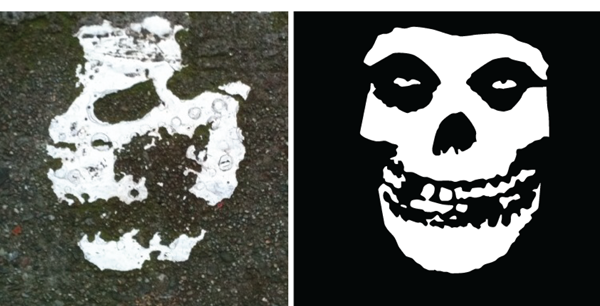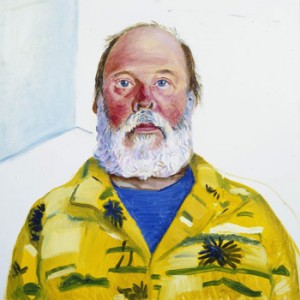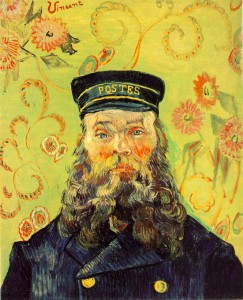Some Unscientific Thoughts on Depression
 Depression is a different animal entirely. For the depressed person, the bulk of precedents—be they figures one admires that also dealt with depression, or works that seem to encapsulate the modern understanding of this phenomenon—have occurred in the last hundred years or so; and although it’s not difficult to develop a strong empathy for depressed figures like Lincoln, Nietzsche, or Albrecht Dürer, the lines of history tend to blur and complicate personal afflictions to such an extent that for every book that might exist exploring the various miserable icons we’ve had, there are hundreds documenting their triumphs and love affairs to bury these desired texts neath the fantastical self help mega library.
Depression is a different animal entirely. For the depressed person, the bulk of precedents—be they figures one admires that also dealt with depression, or works that seem to encapsulate the modern understanding of this phenomenon—have occurred in the last hundred years or so; and although it’s not difficult to develop a strong empathy for depressed figures like Lincoln, Nietzsche, or Albrecht Dürer, the lines of history tend to blur and complicate personal afflictions to such an extent that for every book that might exist exploring the various miserable icons we’ve had, there are hundreds documenting their triumphs and love affairs to bury these desired texts neath the fantastical self help mega library.
TWO FEASIBLE PRECEDENTS

The first, and perhaps most obvious best friend to the depressed person post-1995 who happens to enjoy literature, is probably David Foster Wallace. Before him, the aforesaid lines of history tend to make the case of Sylvia Plath or Van Gogh fairly cut and dry, to the extent that Plath’s life might be seen as her sitting down at a desk and writing some beautiful works, then immediately falling into such a vat of misery that she stuck her head in an oven, the same model largely applies for Van Gogh except it’s paint, with a bit of ear-severing—though not as drastic as history has made it out to be—and the man shooting himself in the heart twice before walking back into the city undead, only to die two days later. With Wallace, however, we have an accomplished intellect who came to suffer severely from depression after the road had begun to be mapped out for him. Already well into his college career—and of course you can argue that his depressive tendency existed before this, but as I understand it this was when Wallace really came to blows with the malady—he seemed destined for literary accomplishment before being thrust into the void of chemical dissonance and thus forced to consider contemporary (this is important) means of salving the indiscernible wound. And, luckily for us, he managed to write some of the most fascinating fiction and non- about the subject to happen in years. This is a curious thing to me. For all the talk I’ve heard of Wallace’s mastery over the contemporary form, or something, I seldom hear discussed his great command over the subject of fucking misery, modern boredom, or complete and total suicidal ideation. I guess it’s hinted at much of the time, but as far as I’m concerned the guy is close to our American Foucault as it relates to the depressive animal, with “Good Old Neon” or the Kate Gompert portions of Infinite Jest—perhaps my favorite in the whole book, weirdly enough—or Wallace’s nonfiction and more—the subject tends to permeate everything as far as I’ve gathered—what we have in Wallace is a guide for the solving of the plight described by Scott Fitzgerald years prior to this, that “the natural state of the sentient adult is a qualified unhappiness.” For more on this I highly recommend Postitbreakup’s fairly recent post for Dennis Cooper’s blog, “David Foster Wallace’s triptych on depression.” READ MORE >
Skullfuck’d diary

Every morning I pass a paint splatter that makes me think of the Misfits, but in my version the man had syphilis, an affliction which eventually corrodes the skull. I don’t like punk, or at least I don’t understand it; feels bourgeois almost, like not wearing a shirt and screaming seems like a privilege, and if you still have food at the end of the day, then thank you Safeway and why you bitchin’? When I was 17, it was a pretty bad year. I was listening to hair bands, reading Penthouse letters, and testing my small yellow middle-finger for the first time.
 What you don’t see are decaying leaves on the pavement, as I cropped them for aesthetic reasons. So a long time ago on Tennessee and 22nd st. in the “Dogpatch” area in Potrero district, a painter spilled some white paint on the sidewalk, maybe even accidentally stepped in it, then walked away; he was a contractor probably, who just painted a house he didn’t live in so it didn’t really matter. Maybe that’s god, some guy who painted skin on us, then walked away.
What you don’t see are decaying leaves on the pavement, as I cropped them for aesthetic reasons. So a long time ago on Tennessee and 22nd st. in the “Dogpatch” area in Potrero district, a painter spilled some white paint on the sidewalk, maybe even accidentally stepped in it, then walked away; he was a contractor probably, who just painted a house he didn’t live in so it didn’t really matter. Maybe that’s god, some guy who painted skin on us, then walked away.
Meeting people is cheesy


David Hockney’s 1988 portrait of his critic/curator friend Henry Geldzahler is a likely summoning of Van Gogh’s 1889 portrait of his postman Joseph Roulin. Hockney is a known admirer of Van Gogh, so this is not shocking news; it just struck me how similar the subjects look — God’s template for people limited, each person another’s reincarnation. The men, weighed down by middle-aged bulk, look out over rosy cheeks with sky blue eyes. Their collars made from sharp triangles, the guillotine of fabric life.
A cynic will say it’s all about who you know, which might explain Hockney and Van Gogh’s respective ascent and descent in the art world. (Roulin unfortunately could only help with the mail, by which Gauguin’s heated correspondence was no doubt conveyed.) Van Gogh only had a set of brushmarks, and Roulin’s beard is described in the same fashion as the manic trees and clouds of Van Gogh’s dreamlife. Hockney’s less modernist brush work is cleaner, flatter.
“Yah, it’s all about who you know,” I hear myself say at parties to the spinach dip, “fucking system.” Cynicism is rationalism for losers, so hello. If there is a system, Gauguin left it when he moved to Tahiti forever, braising in the humid yellowed air with beautiful brown women. “I shut my eyes in order to see,” he once said, under a spell of sweaty Tahitian sun hinted by Henry’s tropical-themed shirt, which means vacation is either near or just ended.
The eye’s translucence is paradoxically noted with an opaque dab of white. Nothing so fake as painting can be so real. The great thing about art is every stranger, however long ago, has a chance to see and be seen. It’s all about who you don’t know.
